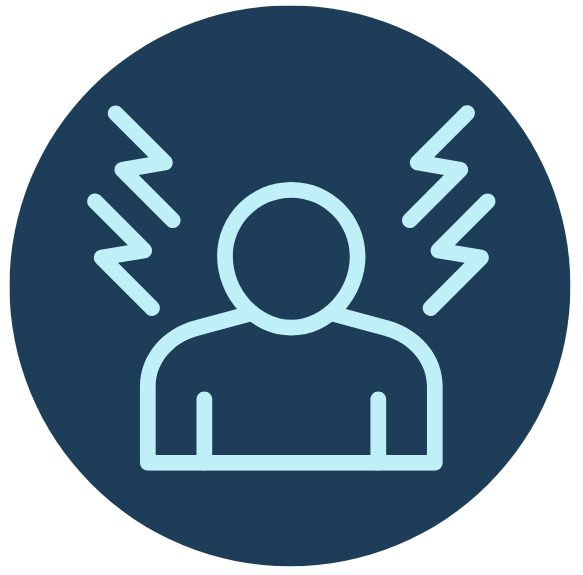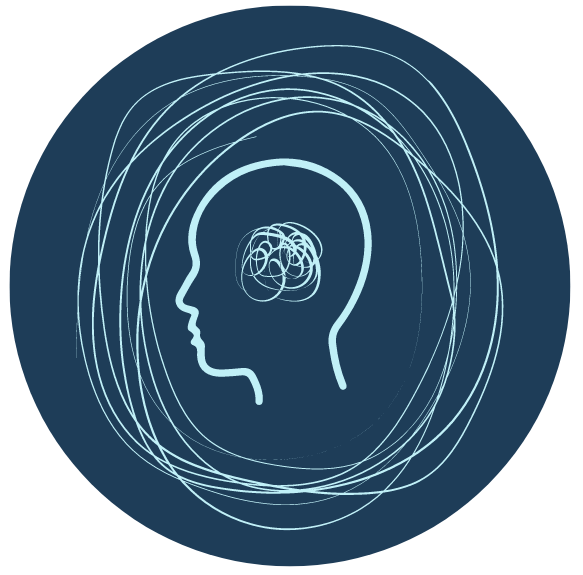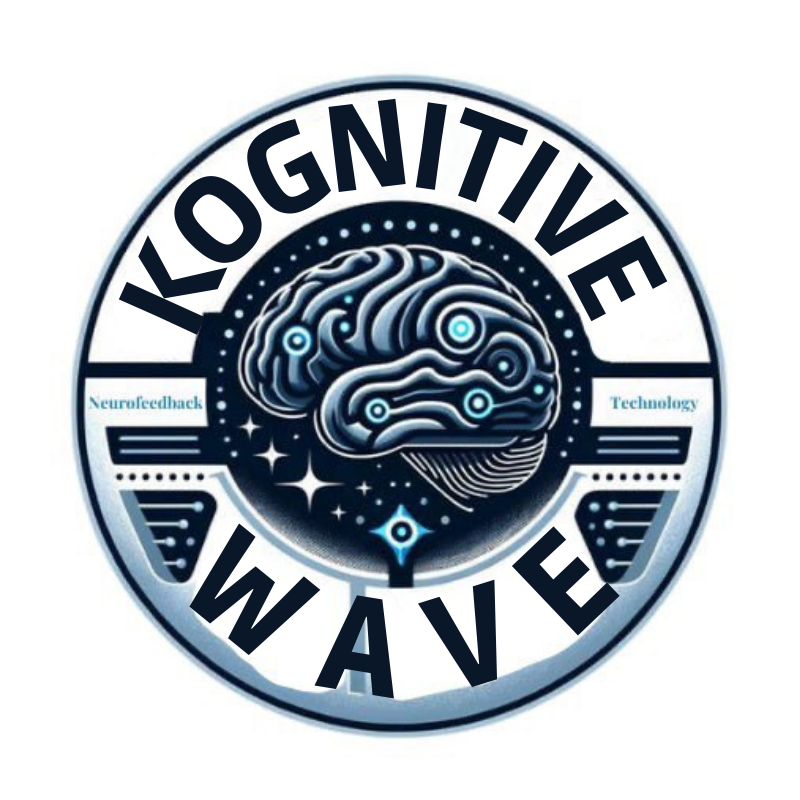Our Services
How Neurofeedback can Help you
When battling depression and finding little relief from medications, Neurofeedback Intervention emerges as a beacon of hope. With millions of treatments administered, Neurofeedback has gained FDA clearance as a safe, effective, and medication-free option for addressing a range of conditions including depression, PTSD, concussions, anger management, autism, addiction, and weight loss. This innovative therapy empowers individuals to actively participate in their healing process, providing a non-invasive alternative to traditional treatment methods and offering new possibilities for those seeking to overcome their challenges without relying on medication.

Depression
Neurofeedback training aids in managing depression by helping the brain to regulate its own activity more effectively. This non-invasive technique uses real-time displays of brain activity—typically through EEG—to teach self-regulation of brain function. For individuals with depression, neurofeedback can target specific brain areas associated with mood regulation, such as the prefrontal cortex. By training the brain to produce more of certain brain wave patterns associated with positive mood states and reduce patterns linked to depression, individuals can experience an improvement in depressive symptoms. Over time, neurofeedback can enhance the brain’s ability to maintain these healthier patterns autonomously, leading to sustained improvements in mood, cognitive function, and overall well-being. This approach complements traditional treatments for depression, offering a targeted way to address the neurological aspects of the condition without the need for medication.

Concussion
Concussions, whether mild or severe, affect the brain and the central nervous system (CNS), leading to a variety of symptoms such as sleep disturbances, headaches, sensitivity to light and sound, word-finding difficulties, dizziness, and irritability. Neurofeedback is a technique aimed at stabilizing the CNS by encouraging the brain to form new neural connections. It provides real-time feedback on brain activity, allowing the brain to self-correct and optimize its functioning. As a result, individuals often experience improvements in sleep quality, reduced headache frequency and intensity, decreased sensitivity to external stimuli, and enhanced coping mechanisms like meditation or mindfulness. This leads to a more balanced state of well-being over time. People with mild concussions tend to respond quickly to neurofeedback, experiencing a significant reduction in symptoms. Those with post-concussion syndrome also report symptom improvement, including better management of symptom fluctuations. Case studies have shown remarkable outcomes for individuals with traumatic brain injuries (TBIs) undergoing neurofeedback, highlighting its potential as a beneficial intervention.

Chronic Pain
Neurofeedback aids in chronic pain management by guiding the brain to adjust its processing of pain signals, specifically targeting the prefrontal cortex and the anterior cingulate cortex—regions key to pain perception and emotional regulation. This technique utilizes real-time feedback to help individuals learn to alter brainwave patterns associated with pain and distress. As participants learn to modulate activity in these critical areas, they often experience a diminished perception of pain, lower levels of pain-related stress and anxiety, and improved mood regulation. This tailored approach not only contributes to a decreased dependence on pain medications but also enhances the overall quality of life. With continued neurofeedback sessions, the brain increasingly adopts these adaptive patterns, offering a pathway to sustained chronic pain relief.

PTSD
Neurofeedback assists in managing PTSD by targeting dysregulated brain activity commonly associated with this condition. Individuals with PTSD often exhibit altered patterns in areas like the amygdala, responsible for processing fear and emotional responses, and the prefrontal cortex, which regulates emotional control. Neurofeedback trains the brain to normalize activity in these regions, helping to reduce hyperarousal symptoms and improve emotional regulation. By providing real-time feedback on brain wave patterns, it enables individuals to learn how to modulate their brain activity, decreasing the intensity of PTSD symptoms such as anxiety, flashbacks, and sleep disturbances. This process fosters a sense of control over their emotional state, contributing to a reduction in PTSD symptoms and an overall improvement in well-being. Over time, with repeated sessions, neurofeedback can help retrain the brain to maintain more stable and healthy patterns of activity, offering a non-invasive option for long-term PTSD management.

anger Management
Neurofeedback training for anger management helps by targeting specific areas of the brain associated with emotional regulation and response control, notably the prefrontal cortex and the amygdala. The prefrontal cortex is crucial for managing impulses and reasoning, while the amygdala plays a key role in emotional reactions, including anger. Through neurofeedback, individuals learn to regulate the activity in these brain regions, improving control over emotional responses and reducing anger episodes. The process involves monitoring brain wave patterns and providing real-time feedback to teach the brain to adopt more balanced and less reactive states. This training enhances the individual’s ability to remain calm, reduces impulsivity, and promotes a more measured response to situations that might previously have triggered anger. Over time, with repeated sessions, neurofeedback can facilitate lasting changes in brain function, significantly improving anger management and overall emotional well-being.

Professional Development
Neurofeedback training for personal development aids in enhancing cognitive functions, emotional regulation, and overall mental performance by focusing on various parts of the brain, depending on the specific goals of the individual. Commonly targeted areas include the prefrontal cortex for improving decision-making, problem-solving, and emotional control; the parietal cortex for enhancing sensory processing and spatial orientation; and the temporal lobes for improving memory and language comprehension.
By providing real-time feedback on brain activity, neurofeedback trains individuals to self-regulate their brainwaves, leading to improved concentration, stress reduction, and heightened creativity. This process supports the development of a more resilient and flexible brain, capable of adapting to challenges and optimizing performance across a range of activities.
For personal growth, neurofeedback helps to strengthen neural pathways associated with positive attributes such as mindfulness, self-awareness, and emotional intelligence. The training encourages the brain to maintain these optimal states, contributing to an individual’s overall well-being and their ability to achieve personal and professional goals. Over time, neurofeedback can facilitate lasting brain changes, empowering individuals to reach their full potential.
What do I need to do to begin training?
To embark on your training journey, the following items and preparations are necessary:
Frequently Asked Questions
Welcome to Kogniwave! Below are answers to some of the most common questions our clients ask:

Unlock your mind’s potential with Muse. Get yours now!
Insurance and Payment Information
Insurance Coverage: Due to the innovative nature of the technology and software costs, insurance coverage or pay scale adjustments are not offered.
Payment Flexibility: Options are available to accommodate monthly payments for ongoing treatment.For more information or to schedule sessions, please contact our office .
